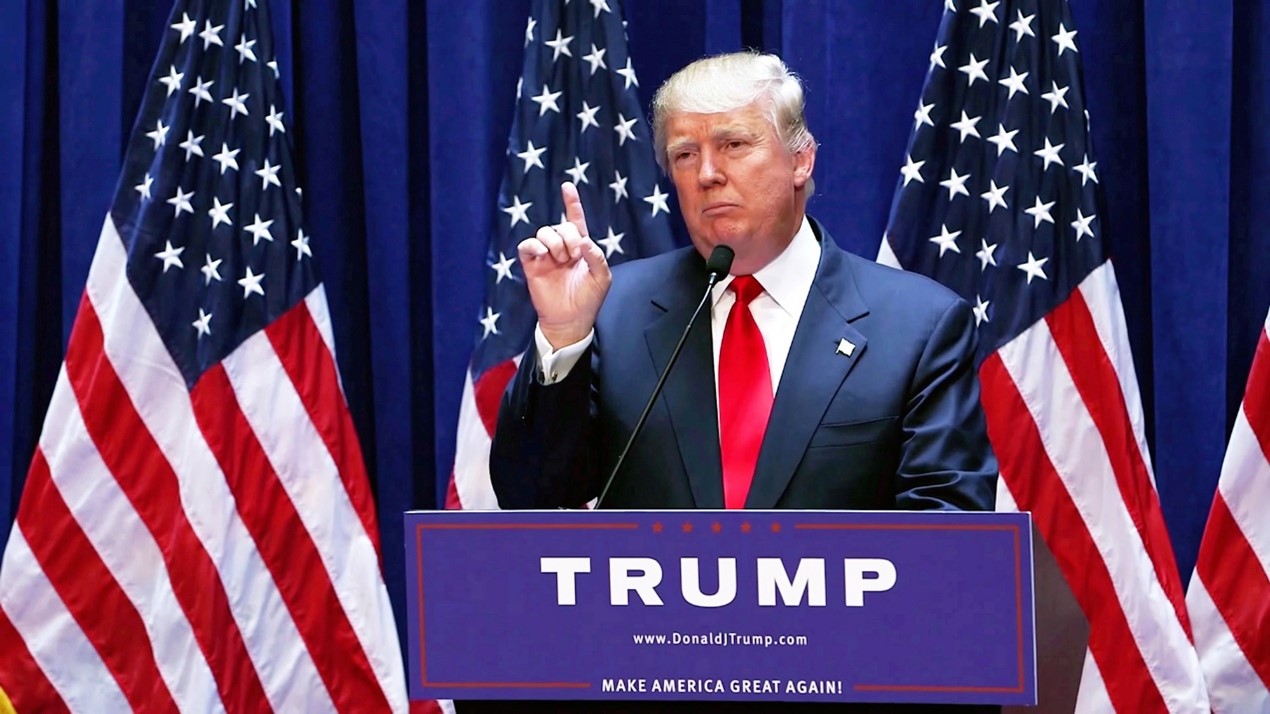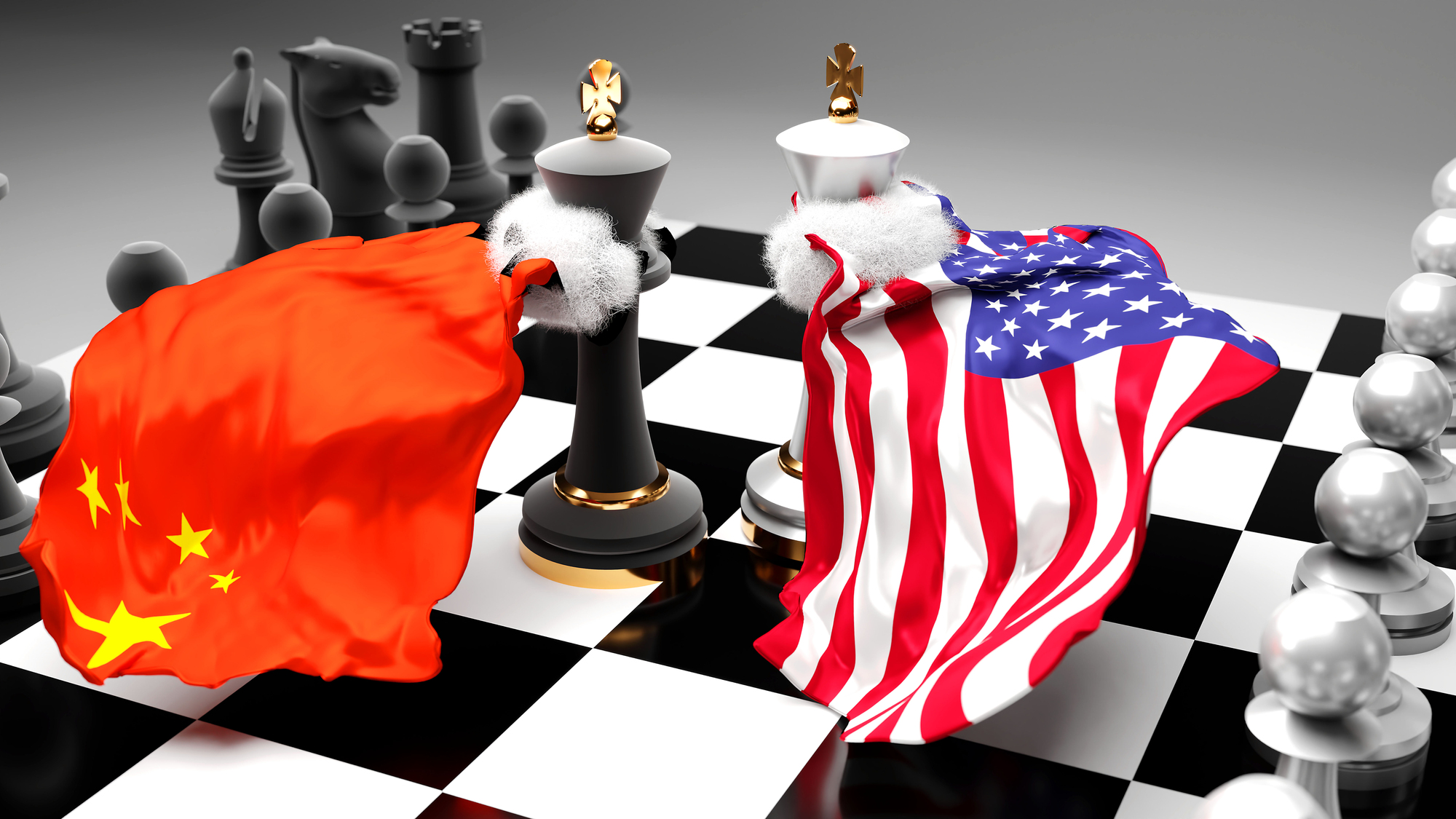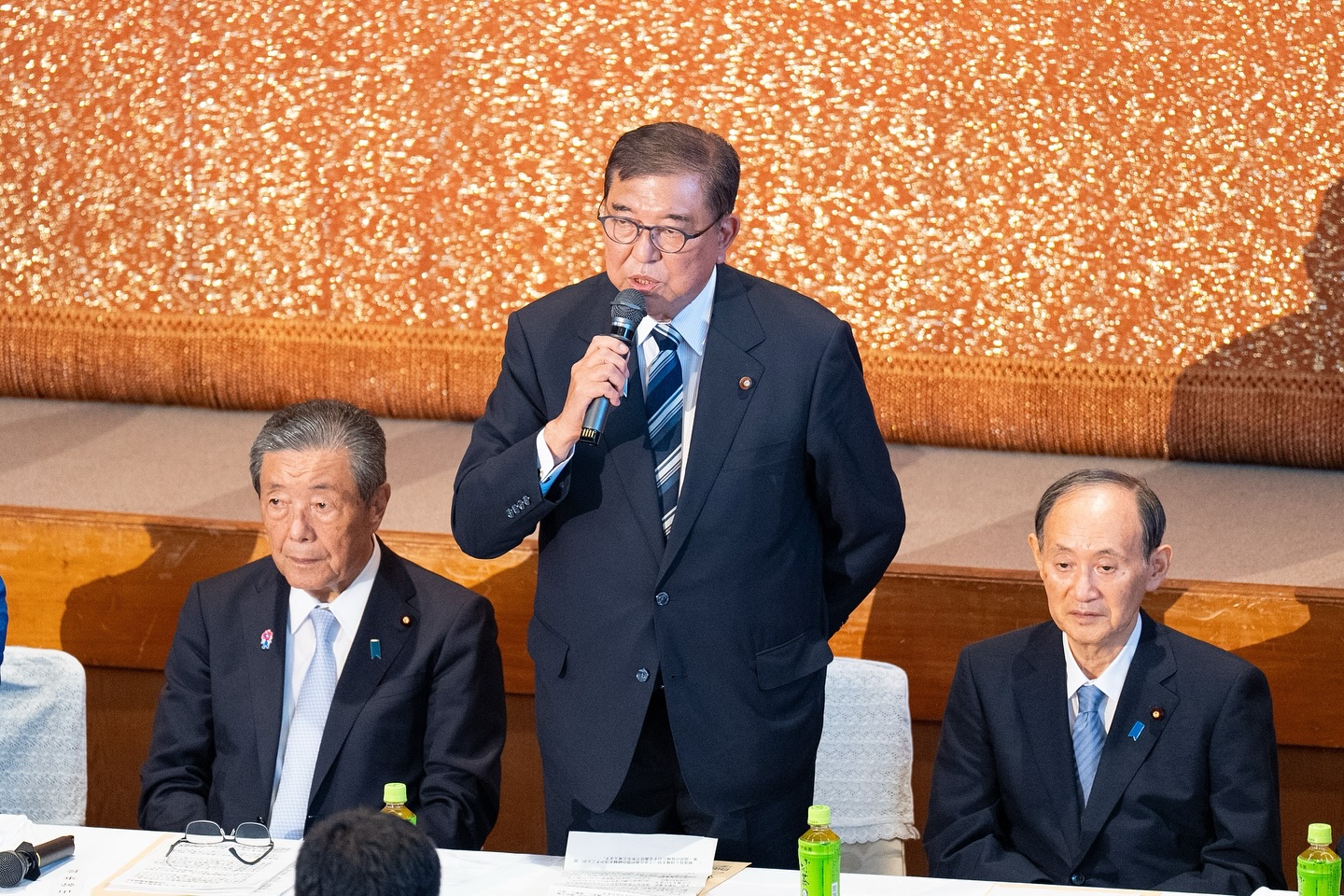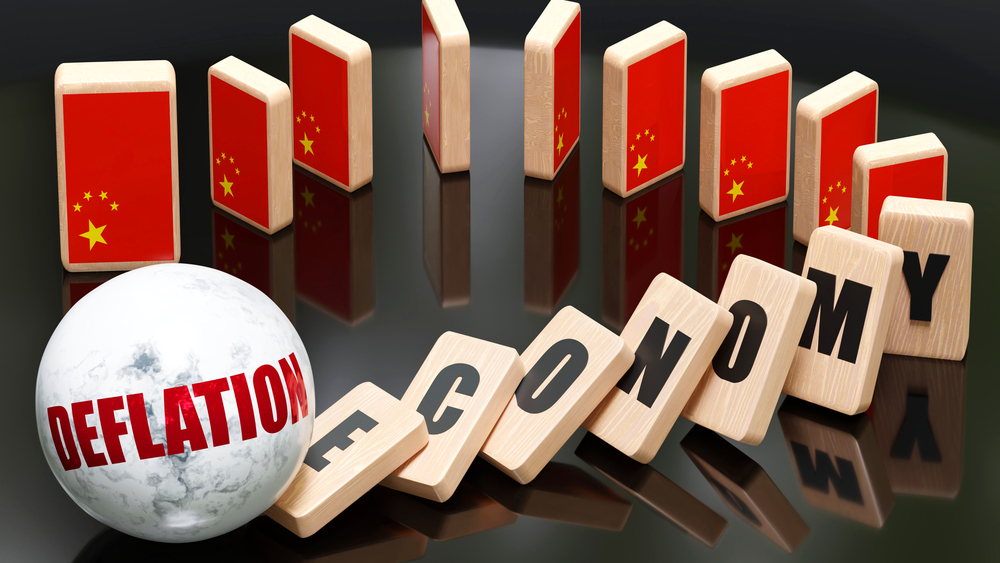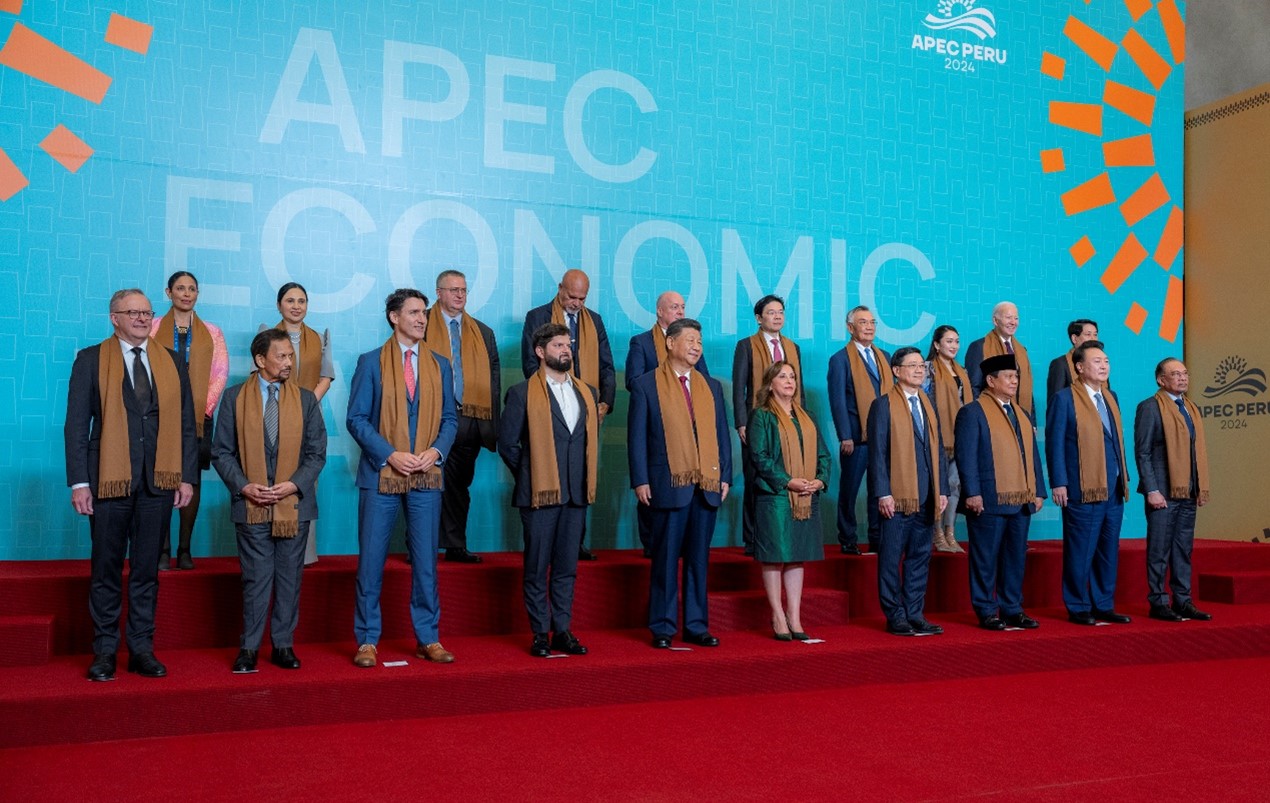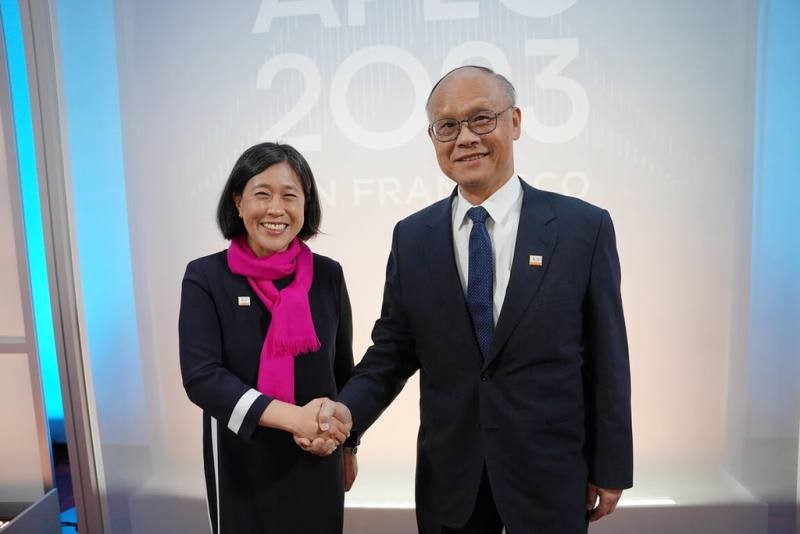Prospects for Foreign Policy and Taiwan-U.S. Relations under the Second Trump Administration
The second Trump administration is expected to continue the competitive stance toward China established in his first term and upheld by the Biden administration. While some advisors lean toward isolationism, Team Trump generally agrees on bolstering Taiwan’s defense readiness and deterring China. Picture source: Depositphotos.
Prospects & Perspectives No. 62
Prospects for Foreign Policy and Taiwan-U.S. Relations under the Second Trump Administration
By Kuang-Shun Yang
Donald Trump’s recent electoral success, added to Republican majorities in Congress and governorships, have granted the future Trump administration a substantial mandate. This development has sparked concerns in Taiwan, particularly in light of Trump’s past statements regarding the island nation. Notably, he has accused Taiwan of “stealing“ the chip business from the United States, suggested that Taiwan should pay the U.S. for protection, and maintained a stance of “strategic ambiguity“ on Taiwan’s defense. Contrasting with the sentiment of uncertainty prevalent after Trump’s first victory in 2016, these positions Trump takes today have raised eyebrows among Taiwanese observers.
The anticipated composition of Trump’s national security team and policies on China and Taiwan nevertheless suggests continuity in the U.S. strategy of countering China while supporting Taiwan. Despite escalating tensions, the “fighting without breaking” dynamic between Washington and Beijing is expected to persist. Like other U.S. allies, Taiwan needs to signal a commitment to strengthening its defense and economic ties with the United States.
A National Security Team of ‘China Hawks’
In the lead-up to and following the recent election, media outlets have speculated on potential appointees for Trump’s Cabinet. Notable figures frequently mentioned include:
- Secretary of State: Richard Grenell, former Acting Director of National Intelligence, Sen. Bill Hagerty, Sen. Marco Rubio, and Robert O’Brien, former National Security Advisor.
- Secretary of Defense: Rep. Mike Waltz, Sen. Tom Cotton, and Rep. Mike Rogers.
- National Security Council: Gen. Keith Kellogg, former advisor to Vice President Pence, and Elbridge Colby, former Deputy Assistant Secretary of Defense.
Given the Republican Party’s need to secure a majority in Congress, particularly the Senate, Trump is likely to prioritize close strategists and individuals with prior government experience. Trump also openly ruled out Pompeo for his administration. Additionally, figures like Elon Musk, with substantial business interests in China, as well as Tucker Carlson and Vivek Ramaswamy, who have made controversial statements about Taiwan, could remain close to the Trump administration in advisory roles. However, they are unlikely to hold national security positions.
The prospective national security officials, along with Vice President-elect J.D. Vance, are considered “China hawks,” yet they may differ on support for Ukraine and Taiwan. The prevailing view within Team Trump favors redirecting aid from Ukraine to other priorities, such as U.S. border security, deterring China, or shifting burdens to European allies. However, Kellogg sees continued support as essential for leverage in negotiations with Russia, and Rogers supports sending weapons Ukraine needs and lifting limits of use of those weapons.
Opinions on Taiwan policy also vary within Team Trump: Colby advocates for “strategic clarity” on U.S. defense of Taiwan, whereas O’Brien prefers “strategic ambiguity,” avoiding explicit commitments to sending troops to defend Taiwan. Waltz has criticized Secretary of State Antony Blinken’s stance against supporting Taiwanese independence. Colby, however, believes the U.S. should avoid encouraging Taiwan’s independence. To bolster Taiwan’s defenses, Rogers supports increased Foreign Military Financing (FMF) for Taiwan, while both O’Brien and Colby urge Taiwan to show a strong defense commitment by increasing its defense budget.
A China Policy Prioritizing Tariffs
The Republican Party’s 2024 platform omits any reference to Taiwan, a departure from previous platforms that acknowledged Taiwan and pledged to uphold the Taiwan Relations Act. This omission may signal that Taiwan is not among the top foreign policy priorities for the incoming Trump administration. Instead, President Trump may focus on ending conflicts in Ukraine and the Middle East, addressing tariffs on China, and managing tensions on the Korean Peninsula. Known for his rapport with leaders from China, Russia, the Middle East, and North Korea, Trump could pursue summits with these figures. Simultaneously, he may implement tariffs of 60% or higher on Chinese goods or even revoke People’s Republic of China’s Most Favored Nation status.
With Trump unable to seek a third term in 2028, and potentially losing political momentum after the 2026 midterm elections, his administration may pursue bold initiatives to appeal to American voters. One such move could be the swift imposition of substantial tariffs, including a 60% levy on Chinese goods and a 10% tariff on global imports. While it remains unclear if Trump has directly pressed Xi Jinping to fulfill the 2020 U.S.-China trade deal commitments — which Beijing has yet to fully honor — the current time constraints and heightened distrust toward China suggest that the administration might act more aggressively on tariffs, potentially with greater speed than in Trump’s first term.
A Taiwan Strait Where U.S. Deterrence Meets China’s Strategic Patience
The forthcoming Trump administration faces a complex landscape in the Taiwan Strait, especially as the 2027 “Davidson Window” approaches — a period identified by Adm. Phil Davidson in 2021, suggesting China could be capable of seizing Taiwan by then. Historically, Xi has leveraged nationalist sentiment to mitigate domestic discontent, notably during the initial imposition of tariffs by the previous Trump administration. In response to anticipated U.S. economic and military pressures, the Chinese Communist Party may intensify anti-American nationalist mobilization to consolidate internal support. Concurrently, the U.S. and its allies are expected to implement a more “robust deterrent” strategy in the region, as advocated by the America First Policy Institute (AFPI), a think tank aligned with Trump’s policies.
Nevertheless, domestic mobilization could prompt the CCP to adopt diversionary tactics, potentially involving the use of force, though this would require careful assessment of both internal and external factors. China’s current economic downturn and persistent military corruption constrain its capacity to engage in a costly and complex conflict, particularly in a challenging theater like the Taiwan Strait. With a national security team of prominent China hawks, a second Trump administration could enhance U.S. deterrence against Chinese aggression, particularly if it quickly concludes conflicts in the Middle East and effectively counters Russian expansion in Europe.
Meanwhile, CCP leaders may retain their “strategic confidence” that “the East is rising and the West is declining,” noting perceived weaknesses in American democracy, such as deep social rifts and a trend toward isolationism. With Trump limited to one final term, they may anticipate that his successor will not sustain the same level of pressure on Beijing. Xi’s reported dismissal of a 2027 invasion plan, along with recent Third Plenum resolutions, suggests that his goal of “reunifying Taiwan” is not strictly tied to his potential “reelection” in 2027. In his congratulatory message to Trump, Xi emphasized that “China and the U.S. gain from cooperation and lose from confrontation.” Similarly, the CCP-controlled People’s Daily commented that “the world is big enough for the two countries to develop and prosper together.” These statements may hint at Xi’s intent to challenge Pax Americana through strategic maneuvers in areas like the Taiwan Strait or South China Sea, avoiding direct conflict while seeking advantage during the ongoing shift in global power.
Trump’s View on Taiwan: Pay America for Defense, Invest More in America
Trump’s stance on Taiwan has been clear and consistent. He asserts that Taiwan should “pay us for defense,” urging it to increase military spending. This approach aligns with his broader expectations to alliances, where he has pushed allies—including NATO, Japan, and South Korea — to “invest in common defense.” Given that Taiwan is neither a formal treaty ally nor hosts U.S. troops, Trump’s proposal could be more practically realized through Taiwan’s increased procurement of U.S. weapons and defense systems. This approach also aligns with the AFPI agenda, which advocates providing Taiwan “with the military, diplomatic, and moral support needed to sustain them.”
Regarding a potential Chinese invasion of Taiwan, Trump has refrained from explicitly committing to sending U.S. troops, instead focusing on strengthening his “negotiating position.” He has threatened retaliatory tariffs of 150% to 200% on China and even suggested “bombing Beijing“ as a deterrent. Waltz also noted Trump’s belief in preventing war through “economic strength in a way backed by robust military presence.” These statements reflect Trump’s approach of combining ambivalence with toughness to prevent conflict. His remarks questioning Taiwan’s long distance from the U.S. and asking “what do we get from protecting Taiwan“ underscore his unconventional, transactional perspective. With this mindset, Trump urges allies to contribute more to their own defense, discouraging their freeriding on what he sees as America’s undue generosity.
In business matters, Trump has repeatedly claimed that Taiwan is taking away the U.S.’ chip industry, echoing his broader concerns about the outsourcing of jobs and businesses from the U.S. due to globalization. He has made similar accusations against other trade partners, including China, Japan, and Mexico. Given Trump’s protectionist stance, it is likely that trade negotiations between Taiwan and the U.S. — such as the U.S.-Taiwan Initiative on 21st-Century Trade — could stall. This mirrors his withdrawal from the Trans-Pacific Partnership (TPP) upon taking office in 2017, signaling a potential slowdown in trade progress with Taiwan.
Meanwhile, Taiwan could be affected by Trump’s proposed global tariffs or specific tariffs on Taiwanese chips. With Trump’s planned tariffs on the PRC, Taiwanese businesses may be incentivized to shift their investments from China and to the U.S. Given Taiwan’s dominant position in the semiconductor industry, additional tariff costs may ultimately be transferred to American consumers, potentially affecting the U.S. AI chip market. To navigate this complex trade environment, Taiwan and its enterprises need to collaborate with international partners to mitigate tariff impacts.
Conclusion
Past statements from Trump and his team signal likely policy directions on China and Taiwan. Future public statements by Trump and his officials in occasions like the Congress, along with strategic documents like the National Security Strategy, will clarify Trump’s grand strategy. The second Trump administration is expected to continue the competitive stance toward China established in his first term and upheld by the Biden administration. While some advisors lean toward isolationism, Team Trump generally agrees on bolstering Taiwan’s defense readiness and deterring China. Increased coercion from Beijing could prompt Washington to heighten pressure on Beijing, pushing Taiwan to strengthen its defense.
To ensure enduring U.S. support, Taiwan might consider boosting its defense spending, expanding procurement of U.S.-made defense articles, and promoting investment in the U.S. While cultivating ties with Trump’s team, Taipei should also maintain strong connections with Democrats and engage at the grassroots level to solidify broad-based American support for Taiwan.
(Kuang-Shun Yang is a co-founder of U.S.-Taiwan Watch.)


